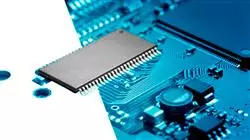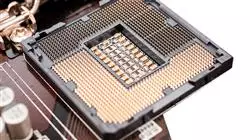University certificate
The world's largest faculty of information technology”
Introduction to the Program
Become an expert in Cybersecurity by mastering Computer Science and Data Analysis, thereby greatly improving your employability in an increasingly booming sector"

The computer science industry is critical in an increasingly digitized world, marking a significant impact on society and global economies. In this context, the field of cybersecurity and data analysis takes on special relevance, as it allows managing large volumes of information and protecting systems against increasingly sophisticated threats. High specialization in these areas is configured as a key factor to lead companies towards success and innovation.
The program in Computer Science, Cybersecurity and Data Analytics at TECH Global University addresses the essential concepts of these disciplines, taking the participant from the fundamentals to the most advanced applications. It covers aspects such as advanced programming, information security management systems, data science and architectures for intensive data handling, as well as including the latest trends in risk analysis and innovative technologies such as Blockchain and artificial intelligence.
One of the main advantages of this program is its 100% online modality, which allows students to organize their learning pace according to their needs, facilitating the reconciliation with other responsibilities. This methodology offers a comprehensive experience, designed to boost professional performance and respond to the demands of a sector in constant growth.
Strengthen the business fabric by managing cybersecurity strategically and effectively”
This Advanced master’s degree in Computer Science, Cybersecurity and Data Analytics contains the most complete and up-to-date educational program on the market. Its most notable features are:
- The development of case studies presented by experts in Computer Science, Cybersecurity and Data Analytics
- The graphic, schematic, and practical contents with which they are created, provide scientific and practical information on the disciplines that are essential for professional practice
- Practical exercises where the self-assessment process can be carried out to improve learning
- Special emphasis on innovative methodologies in the management of Computer Science, Cybersecurity and Data Analytics Industries
- Theoretical lessons, questions to the expert, debate forums on controversial topics, and individual reflection assignments
- Content that is accessible from any fixed or portable device with an Internet connection
Reinforce your theoretical knowledge with a multitude of practical resources included in this program”
It includes in its teaching staff professionals belonging to the field of Cybersecurity and Data Analysis, who pour into this program the experience of their work, as well as recognized specialists from reference companies and prestigious universities.
The multimedia content, developed with the latest educational technology, will provide the professional with situated and contextual learning, i.e., a simulated environment that will provide an immersive learning experience designed to prepare for real-life situations.
This program is designed around Problem-Based Learning, whereby the student must try to solve the different professional practice situations that arise throughout the program. For this purpose, the professional will be assisted by an innovative interactive video system created by renowned and experienced experts.
Access the most innovative teaching methodology that TECH offers in today's academic landscape"

Study at your own pace with a 100% online program, available anytime, anywhere in the world"
Why study at TECH?
TECH is the world’s largest online university. With an impressive catalog of more than 14,000 university programs available in 11 languages, it is positioned as a leader in employability, with a 99% job placement rate. In addition, it relies on an enormous faculty of more than 6,000 professors of the highest international renown.

Study at the world's largest online university and guarantee your professional success. The future starts at TECH”
The world’s best online university according to FORBES
The prestigious Forbes magazine, specialized in business and finance, has highlighted TECH as “the world's best online university” This is what they have recently stated in an article in their digital edition in which they echo the success story of this institution, “thanks to the academic offer it provides, the selection of its teaching staff, and an innovative learning method aimed at educating the professionals of the future”
A revolutionary study method, a cutting-edge faculty and a practical focus: the key to TECH's success.
The most complete study plans on the university scene
TECH offers the most complete study plans on the university scene, with syllabuses that cover fundamental concepts and, at the same time, the main scientific advances in their specific scientific areas. In addition, these programs are continuously being updated to guarantee students the academic vanguard and the most in-demand professional skills. In this way, the university's qualifications provide its graduates with a significant advantage to propel their careers to success.
TECH offers the most comprehensive and intensive study plans on the current university scene.
A world-class teaching staff
TECH's teaching staff is made up of more than 6,000 professors with the highest international recognition. Professors, researchers and top executives of multinational companies, including Isaiah Covington, performance coach of the Boston Celtics; Magda Romanska, principal investigator at Harvard MetaLAB; Ignacio Wistumba, chairman of the department of translational molecular pathology at MD Anderson Cancer Center; and D.W. Pine, creative director of TIME magazine, among others.
Internationally renowned experts, specialized in different branches of Health, Technology, Communication and Business, form part of the TECH faculty.
A unique learning method
TECH is the first university to use Relearning in all its programs. It is the best online learning methodology, accredited with international teaching quality certifications, provided by prestigious educational agencies. In addition, this disruptive educational model is complemented with the “Case Method”, thereby setting up a unique online teaching strategy. Innovative teaching resources are also implemented, including detailed videos, infographics and interactive summaries.
TECH combines Relearning and the Case Method in all its university programs to guarantee excellent theoretical and practical learning, studying whenever and wherever you want.
The world's largest online university
TECH is the world’s largest online university. We are the largest educational institution, with the best and widest online educational catalog, one hundred percent online and covering the vast majority of areas of knowledge. We offer a large selection of our own degrees and accredited online undergraduate and postgraduate degrees. In total, more than 14,000 university degrees, in eleven different languages, make us the largest educational largest in the world.
TECH has the world's most extensive catalog of academic and official programs, available in more than 11 languages.
Google Premier Partner
The American technology giant has awarded TECH the Google Google Premier Partner badge. This award, which is only available to 3% of the world's companies, highlights the efficient, flexible and tailored experience that this university provides to students. The recognition as a Google Premier Partner not only accredits the maximum rigor, performance and investment in TECH's digital infrastructures, but also places this university as one of the world's leading technology companies.
Google has positioned TECH in the top 3% of the world's most important technology companies by awarding it its Google Premier Partner badge.
The official online university of the NBA
TECH is the official online university of the NBA. Thanks to our agreement with the biggest league in basketball, we offer our students exclusive university programs, as well as a wide variety of educational resources focused on the business of the league and other areas of the sports industry. Each program is made up of a uniquely designed syllabus and features exceptional guest hosts: professionals with a distinguished sports background who will offer their expertise on the most relevant topics.
TECH has been selected by the NBA, the world's top basketball league, as its official online university.
The top-rated university by its students
Students have positioned TECH as the world's top-rated university on the main review websites, with a highest rating of 4.9 out of 5, obtained from more than 1,000 reviews. These results consolidate TECH as the benchmark university institution at an international level, reflecting the excellence and positive impact of its educational model.” reflecting the excellence and positive impact of its educational model.”
TECH is the world’s top-rated university by its students.
Leaders in employability
TECH has managed to become the leading university in employability. 99% of its students obtain jobs in the academic field they have studied, within one year of completing any of the university's programs. A similar number achieve immediate career enhancement. All this thanks to a study methodology that bases its effectiveness on the acquisition of practical skills, which are absolutely necessary for professional development.
99% of TECH graduates find a job within a year of completing their studies.
Advanced Master's Degree in Computer Science, Cybersecurity and Data Analytics
The accelerated pace at which more and more technologies and tools are being developed to move towards a complete digitalization, demands highly qualified professionals. At TECH Global University we developed the Advanced Master's Degree in Computer Science, Cybersecurity and Data Analytics as a response to an ever-changing landscape in which electronic devices and latest generation programs are easily integrated into our daily lives. This program focuses on addressing all the lines of knowledge necessary for data processing and mining, tackling computer security and deepening computer science following a theoretical and practical perspective. With this postgraduate course, you will take a definitive step that will improve your employability and highlight your profile in an increasingly competitive sector.
Specialize in Computer Sciences
At TECH we offer you a high quality program that will allow you to perform with solvency in computer systems, guaranteeing the security of your company. This program includes a complete update, delving into the systematization of the most important aspects of data protection and digital media: programming fundamentals, data structure, algorithms and complexity, architectures and information security models. In the largest Faculty of Informatics you will have the opportunity to reach a new level of knowledge thanks to the most updated academic content, innovative methodologies for online education and the accompaniment of experts in the field that will guide your process. This Advanced Master's Degree will help you boost the growth of your professional career.







